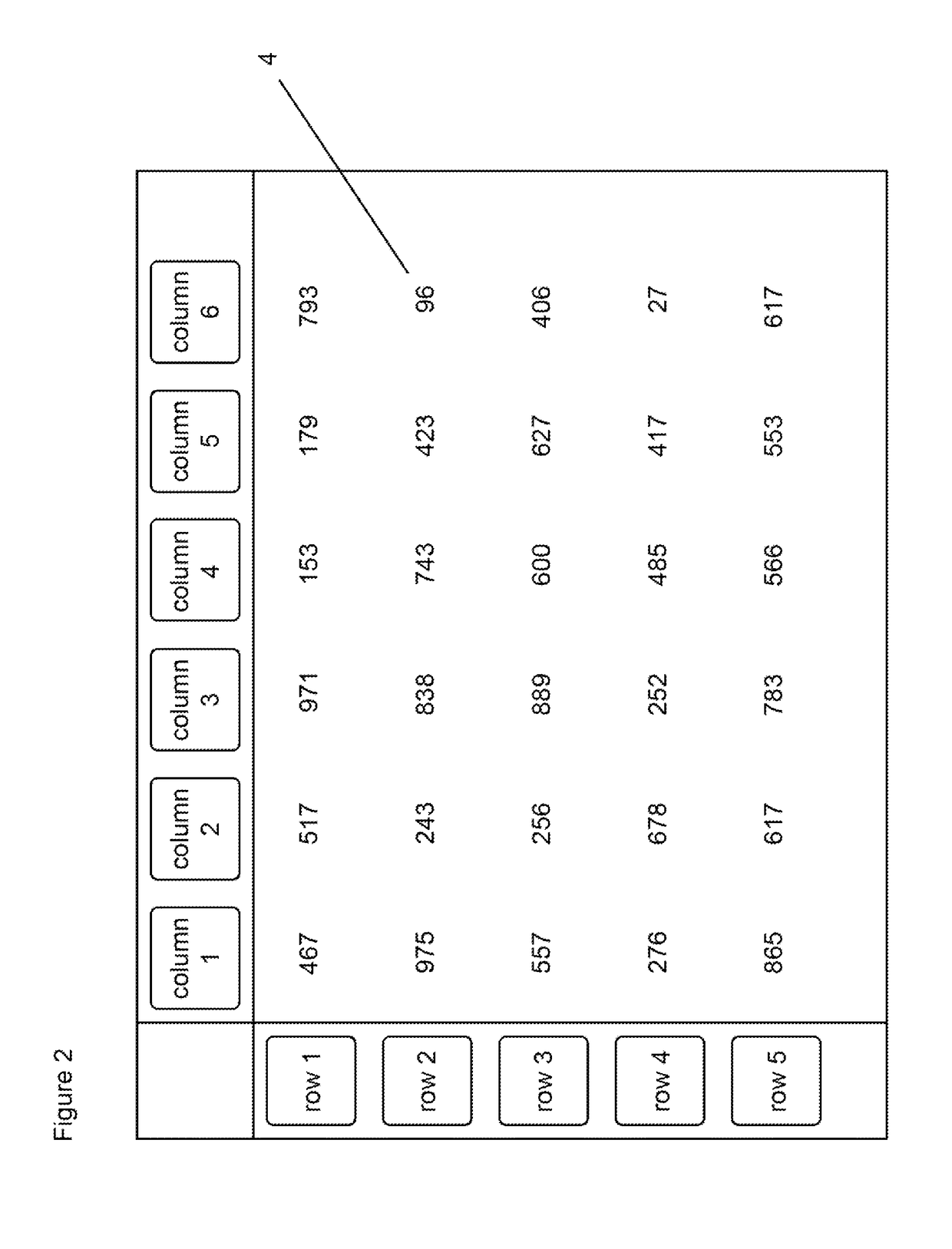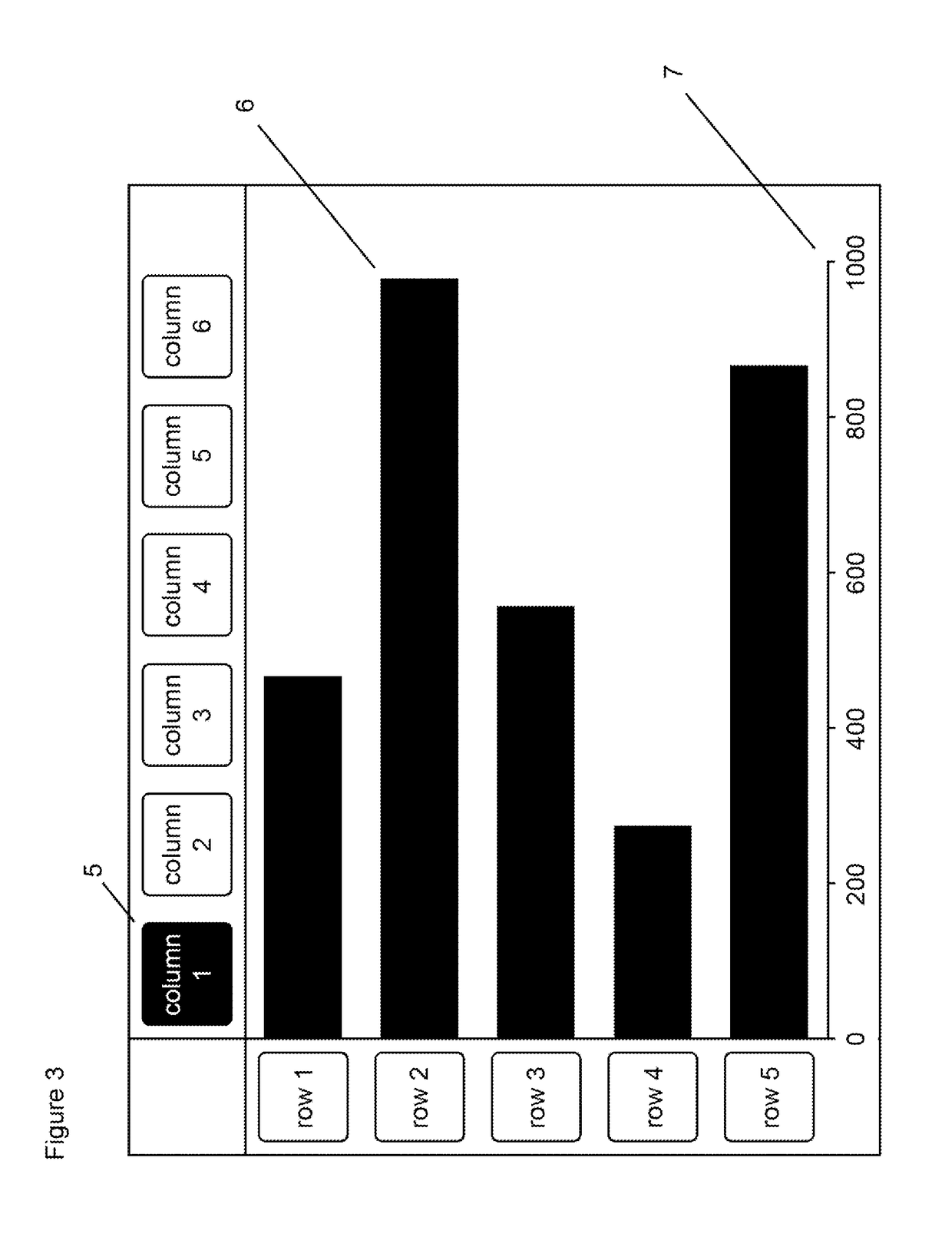User interface for manipulating a data set
a data set and user interface technology, applied in the field of user interface for manipulating a data set, can solve the problems of reducing the space available for the data display region, unable to be easily changed by a user, and directing user's attention away from the data, so as to minimise the number and complexity of interactions and small screens
- Summary
- Abstract
- Description
- Claims
- Application Information
AI Technical Summary
Benefits of technology
Problems solved by technology
Method used
Image
Examples
Embodiment Construction
[0054]FIG. 1 is a schematic representation of a user interface for manipulating a data set. The user interface includes a data display region 1 and a first set of user selectable user interface elements arranged in a row, which in the schematic illustration of FIG. 1 take the form of six column headers 2. The column headers 2 represent values of a first variable in a data set, such as time periods, and are arranged horizontally towards the top of the data display region 1.
[0055]The user interface further includes a second set of user interface elements, which in the schematic illustration of FIG. 1 take the form of five row headers 3. The row headers 3 represent values of a second variable in the data set, such as a category or type of data, and are arranged towards the left edge of the data display region 1.
[0056]As will be described in more detail below, the user can select a column header 2 (using, for example, a click of a mouse button when a pointer is positioned over the colum...
PUM
 Login to View More
Login to View More Abstract
Description
Claims
Application Information
 Login to View More
Login to View More - R&D
- Intellectual Property
- Life Sciences
- Materials
- Tech Scout
- Unparalleled Data Quality
- Higher Quality Content
- 60% Fewer Hallucinations
Browse by: Latest US Patents, China's latest patents, Technical Efficacy Thesaurus, Application Domain, Technology Topic, Popular Technical Reports.
© 2025 PatSnap. All rights reserved.Legal|Privacy policy|Modern Slavery Act Transparency Statement|Sitemap|About US| Contact US: help@patsnap.com



